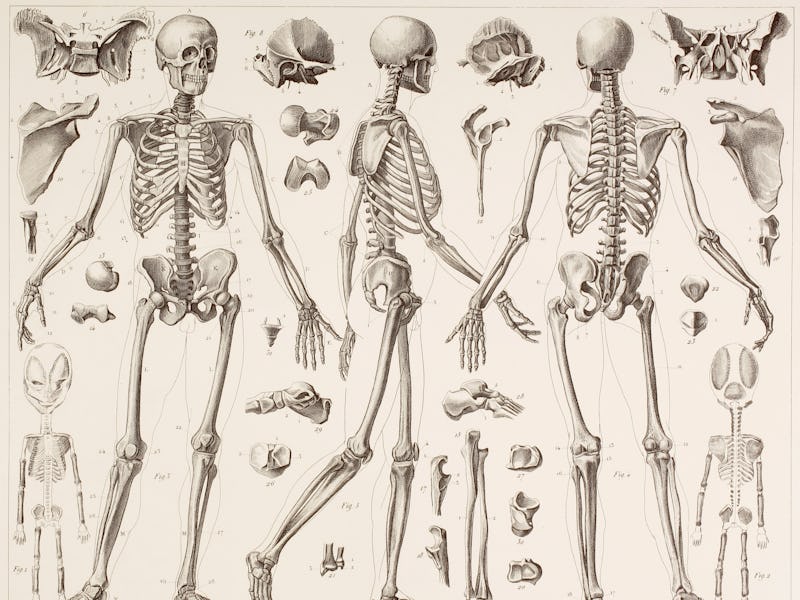You only need 10 minutes to massively benefit from this type of workout
You can make time for this.

Between long hours at work, trying to keep your home in order, and trying to give love to family and friends, time set aside for exercise can seem like a distant dream.
That is until you realize the last time your heart rate went up was two months ago when you forgot to turn the gas off before leaving the house. But there is good news: If you’ve made up your mind to fit a workout into your schedule, there’s no need to block off hours.
Research presented at the annual conference Experimental Biology on Thursday makes a compelling case for the health benefits of (very) short bursts of high intensity interval training during ten-minute workout sessions. You might have heard of this type of workout referred to as HIIT before. This is HIIT — but with a bike.
“The health benefits of our protocol are comparable to continuous training, where people exercise for over 30 minutes,” Remzi Satiroglu, the lead author of the study tells Inverse. He’s a Ph.D. student in the Department of Kinesiology and Health Education at the University of Texas, Austin.
WHY IT'S A HACK — In the exercise science world, the benefits of high-intensity interval training aren’t new.
There was the “seven-minute workout,” touted as a “scientific workout” for its attention to every major muscle group, and its no-equipment-needed ease. Then there’s CrossFit, which spawned an entire culture unto itself. (Crossfit isn’t strictly high-intensity interval training, but it incorporates HIIT methods like tabata, which means alternates bursts of 20-second exertion with ten-second rests in between.)
And while Satiroglu’s workout regimen does require a workout bike, it’s simple and with less room for error than many of the previous iterations of HIIT — like squat jumps or jumping jacks. It’s also faster.
“Such a short bout and short rest are novel,” Satiroglu says. The training in the study has almost laughably short exercise bursts: four seconds of intense biking, with 15 seconds of recovery in between. All you have to do is rinse and repeat.
Study participants also rated this regimen as easier than other forms of HIIT via a commonly used tool called the Borg scale for assessing perceived exertion.
“Current short exercise protocols including Tabata or Sprint Interval Training have very hard levels of rate of perceived exertion. Our study protocol only reached high levels of exertion,” Satiroglu says.
A study at the University of Texas at Austin’s Human Performance Lab found health benefits from very short high intensity workouts.
SCIENCE IN ACTION — During the study, a sample size of 11 healthy participants (six men and five women) around the age of 21 did some short cycling exercises three times a week for eight weeks.
Each session consisted of 30 rounds of four-second "all-out intensity" cycling with a period of rest time in between rounds. In the first week, their rest period between rounds was 30 seconds. From weeks two to four it was 24 seconds and for the last four weeks, it was 15 seconds.
The research team took measurements of exercise performance indicators before and after these training regimens to see if the HIIT protocol improved participant’s health. Before the first week and after the last week, researchers took measurements of blood volume, maximal anaerobic power, and maximal oxygen consumption.
Ultimately, the scientists found that with just sessions of 30 four-second rounds — which in the final weeks amounted to a ten-minute workout — the measures of fitness improved. The participants were performing better. “Any person involved in endurance or aerobic activity will benefit from increased blood volume,” Satiroglu said.
He noted that the benefits of increased blood volume are similar to the effects athletes seek when they engage in “blood doping.” Outside of the study, some athletes artificially boost their red blood cell count to increase their maximum rate of oxygen consumption, which in turn allows the blood to carry more oxygen to their muscles and boosts endurance and health.
“In terms of health, the overall status of one’s cardiovascular system can be improved with increased blood volume,” Satiroglu says.
A cycler in the Tour de France engaging in a significantly longer high intensity workout.
HOW THIS AFFECTS LONGEVITY — Though the team didn’t do a long-term follow-up with the participants, there’s reason to believe that an exercise regimen like this one would have far-reaching benefits for health.
Because the benefits of the training were analogous to a more traditional, continuous half-hour workout, exercisers might expect to see the same sort of long-term benefits.
Apart from cardiovascular fitness, the study suggests these short ten-minute workouts could impart many of the long-term benefits of exercise:
- Boosted mental health
- Lower risk for diseases like diabetes and dementia
- Muscle and bone preservation
And what’s the not-so-secret key to any exercise regimen? Sticking with it.
While the study looked at a very small sample of young, healthy individuals — representing a population least likely to have long-term health problems brought on by a lack of exercise — the workout routine likely works the same way in older adults. Satiroglu worked on another study that tested a very similar workout in a group of 50 to 68-year-olds and saw comparable results.
HACK SCORE OUT OF 10 — 🚴 🚴 🚴 🚴 🚴 🚴 🚴 (7/10)
This article was originally published on